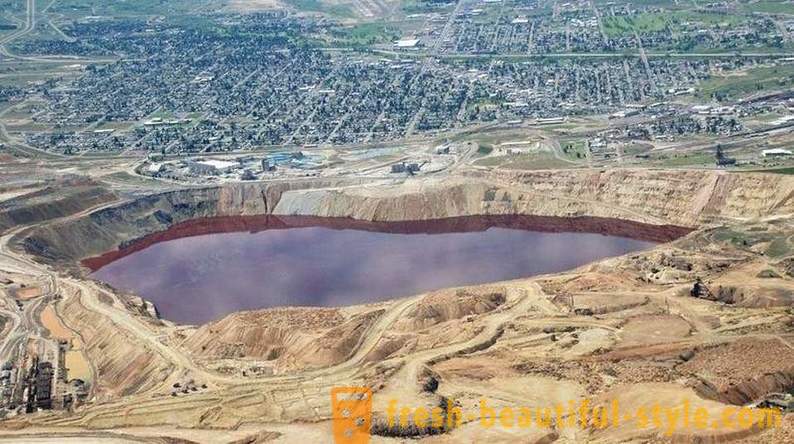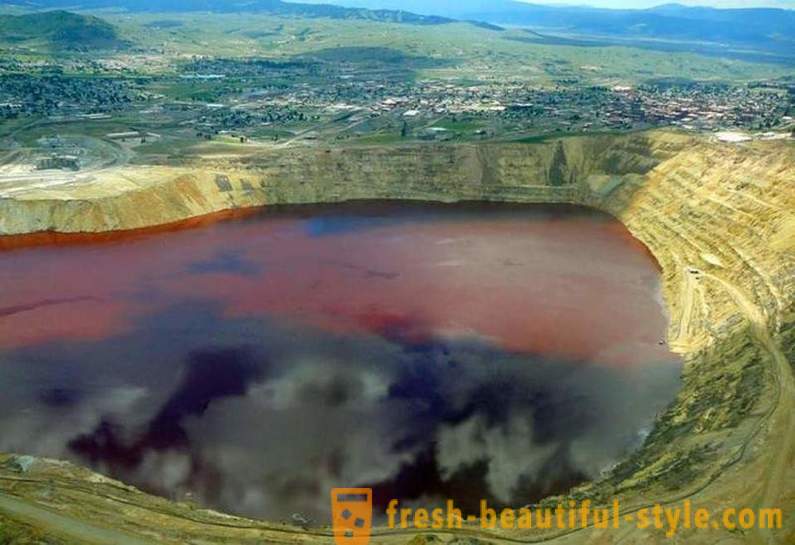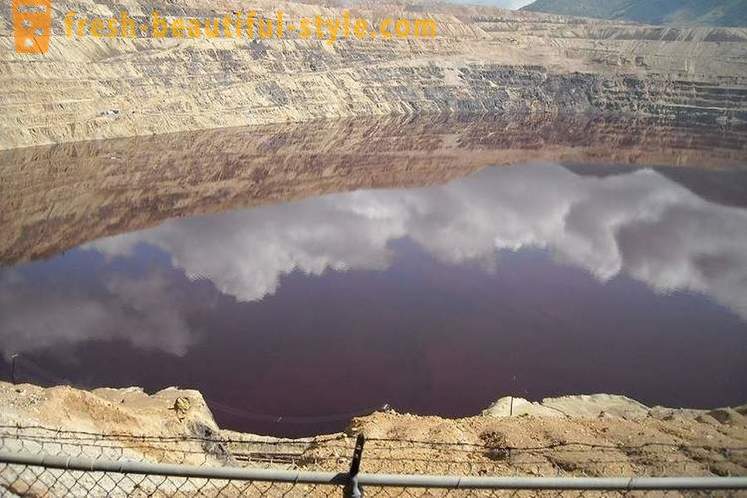What is the most poisonous lake
• What is the most poisonous lake

Berkeley Pit was discovered in 1955 in Montana Anaconda Copper Company as a quarry for the extraction of copper. During the first year there was mined up to 17,000 tons of ore per day. In addition to the copper in the Berkeley Pit find gold and silver, but copper was 75% of total production. On the eastern side of the hill were residential buildings. The company bought its owners to expand the quarry. Quarry replaces underground mining, as it was safer and more economical.
However, as it turned out later, its danger is not so small.
In 1982, the Berkeley Pit, it was decided to close. Water pumps, located at a depth of 1, 2 km, have been disabled. Underground water, washing away all the minerals, began to gradually fill the hole with a speed 0, 3 m per month. Quarry 1, 6 km long, 0, 8 km wide and 540 m deep was filled with water to 270 m.
As a result, today Berkeley Pit - is an explosive mixture of heavy metals and hazardous chemicals - arsenic, cadmium, copper, sulfuric acid, zinc, iron, aluminum. Metals and chemical compounds in the water so much that some of them can be extracted directly from the water. lake pH level is 2, 5, which is comparable with the acidity of lemon juice.

Today pit and water Berkeley Pit is a major environmental problem, because the lake water reacts with ore located in the rock. Pyrite, and other sulphide minerals decompose to form acid. According to experts, by 2020 the water in the lake will reach the level of groundwater and groundwater flow spread across the county, poisoning water and land for kilometers around. In 1990, the program was designed to address this problem. On Lake sewage treatment plants have been installed. They are purified and redirect the incoming water to slow the growth of its level.
In 1995, there was a case when a flock of migrating geese, consisting of more than 300 individuals, the village lake. None of the birds did not survive. The new owner of the quarry - Atlantic Richfield Company - has denied that it is toxic Berkeley Pit water resulted in the deaths of geese, attributing the incident infections. But the results of studies in the laboratory showed that the entrails of dead geese were burns and wounds from exposure to high concentrations of copper, cadmium and arsenic.
In early December 2016 a flock of geese shelter from a snowstorm on Lake Berkeley Pit. This camp, for environmentalists estimated that killed 3,000 birds.
And yet, despite the obvious unsuitability of lake water for living beings, in the Berkeley Pit new species of bacteria and fungi that are able to adapt to the harsh conditions of life were found. Substances that have been isolated from these organisms show selective activity against cancer cells. Scientists believe that they can be used to develop a cure for cancer. Also found in water organisms absorb metals contained in it, thus contributing to a small, but purify water body.

Currently Berkeley Pit - most toxic lake in the world, despite its dangers, attracts tourists. Close to the water like impossible - it is enclosed metal lattice. But alongside established pay an observation deck, which can be considered a dangerous body of water and take a picture for memory.
Company Atlantic Richfield and Montana Resources, who at one time bought the mine and are responsible for it, find that their treatment facilities, installed in 2000, is quite capable of dealing with the purification of water. The company says that by 2019 will be a series of works on modernization of the sewage treatment plant operation. But social activists believe that the company did not keep the situation under control, and their treatment facility, possibly the cheapest way to improve the situation, but not the most efficient.













































